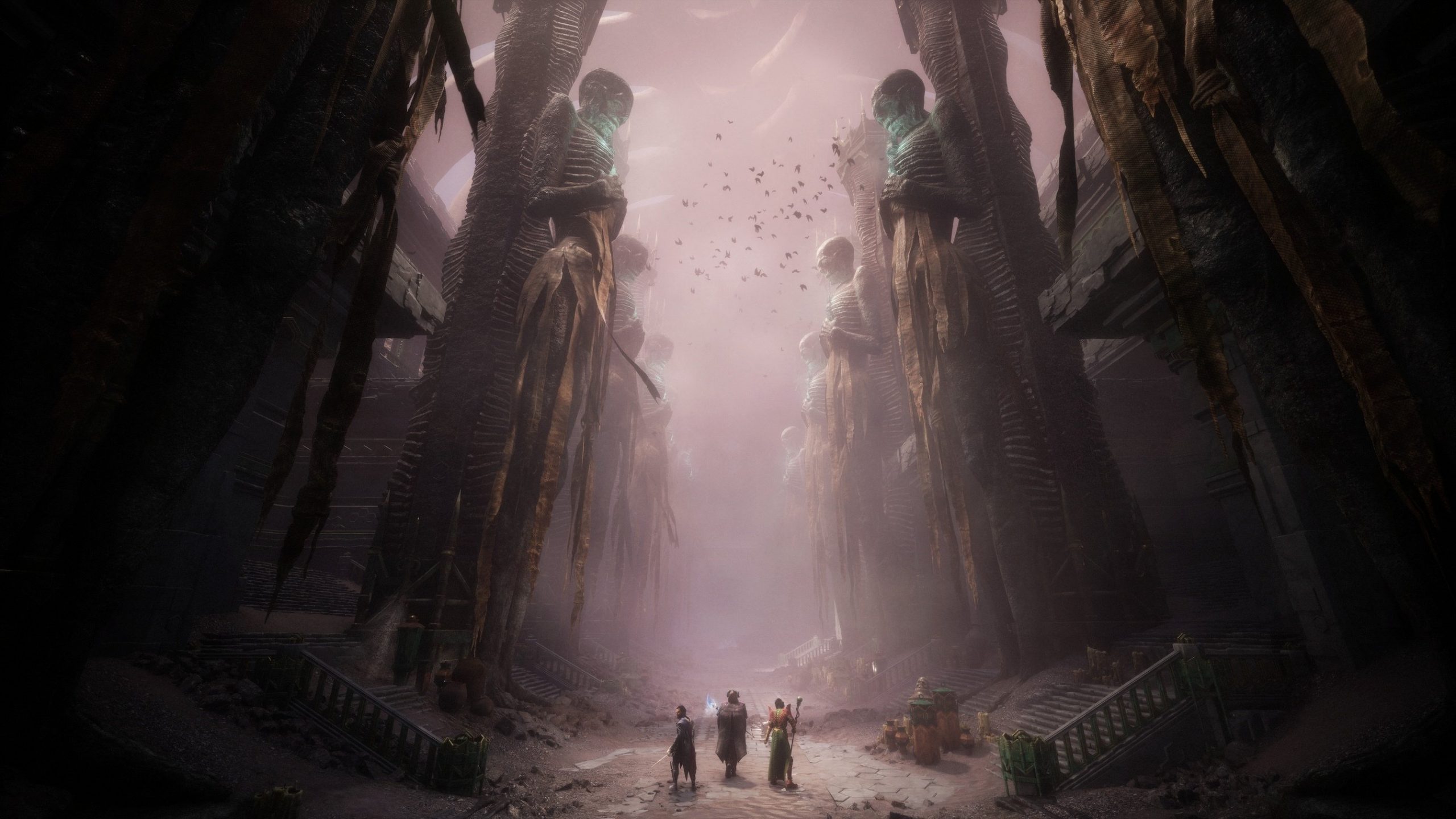
Disclaimer: Since this is a review-in-progress, the final score is subject to change.
It’s been 12 excruciating, miserable years, but BioWare has finally made a pretty good video game again.
And if “pretty good” is all Dragon Age: The Veilguard is, then so be it. This is not a generational RPG on the same level as Baldur’s Gate 3, nor does it reach the modern BioWare heights of Mass Effect 2. But after 30 hours, I’ve settled into a largely positive rhythm with Veilguard, thanks to its mostly strong (if a little cloying) character writing, best-in-the-series combat, and a focused, dense game design philosophy that prioritizes quality over quantity in side quests.
Ah crap, I accidentally let out some evil gods

Credit: BioWare/Steam
I played 80 hours of Dragon Age: Inquisition when it came out in 2014 and came away not really understanding or caring about its big twist at the end, which directly sets up this new adventure. Veilguard does a substantially better job of establishing stakes and getting you to care in the first two minutes after hitting “new game.”
That twist was that one of Inquisition’s central party members, Solas, is actually an ancient elven god with an arcane plan to perform a magic ritual that may or may not destroy the world. Veilguard’s prologue sees new protagonist Rook (who can be anyone you want them to be thanks to a remarkable character creator) trying to stop Solas from doing all of that.
Of course, things go awry, a couple of eldritch nightmare gods are unleashed upon the world, and it’s up to Rook and a group of six or seven diverse heroes to stop them. It may not be as strong as Mass Effect 2 killing the protagonist in a spaceship explosion 10 minutes into the game, but it’s an effective enough intro that gets players into the action relatively quickly.
Group therapy in the magical dimension
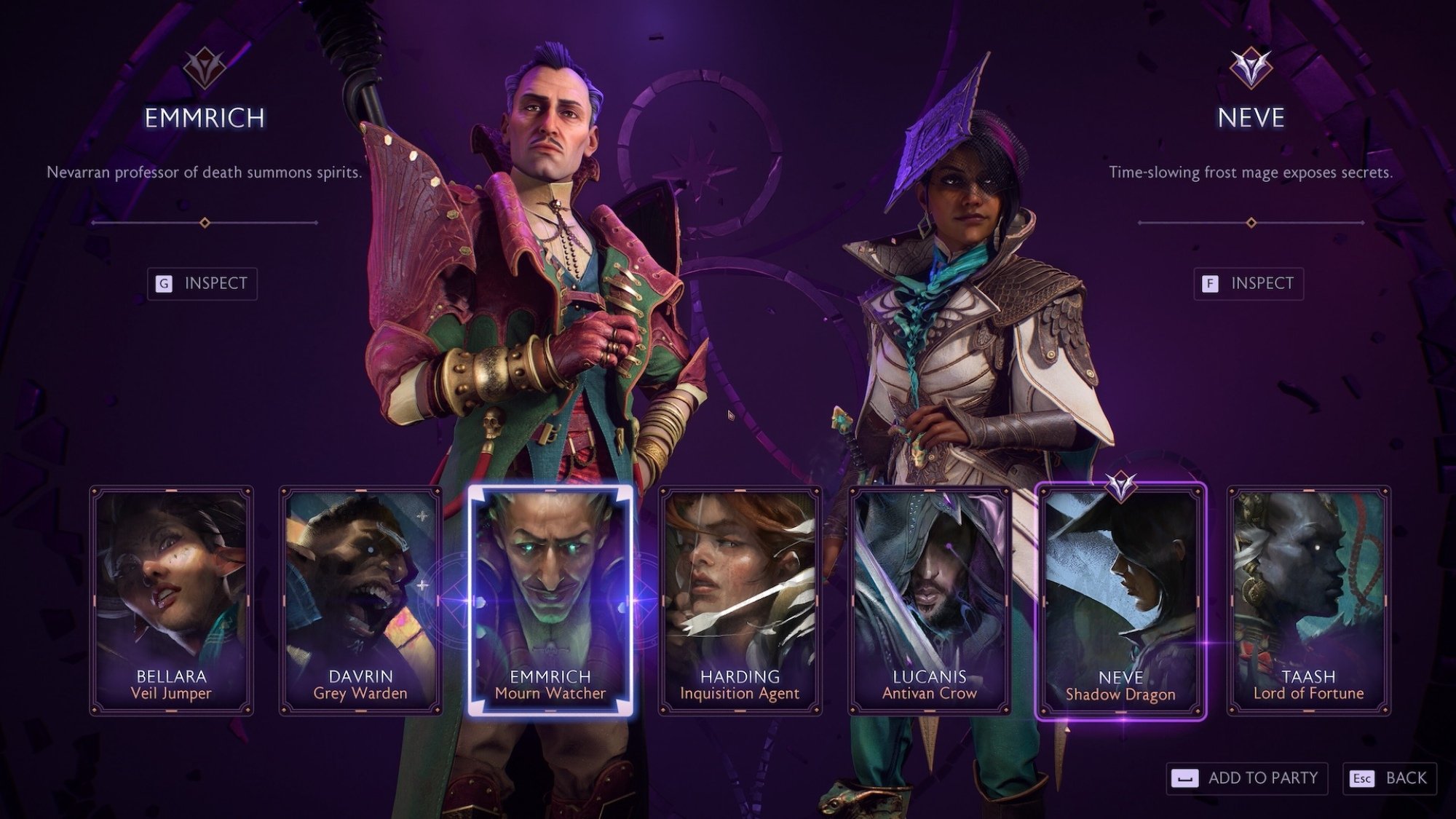
Credit: BioWare/Steam
The A-plot in Veilguard is a perfectly adequate excuse to travel from place to place, removing nasty blight infestations and solving a variety of other problems for a variety of people. Of course, this is a BioWare game, so the real meat is in the characters, and Veilguard’s commitment to its party is one of its best qualities.
Like any other game from the studio, going to a hub area (in this case, a magical lighthouse that doesn’t exist in the tangible world) and talking your homies through their personal problems is a core part of the gameplay loop. Your mileage will certainly vary depending on your disposition, but I think this is a damn solid BioWare party.
Unfortunately, it takes a while to see it that way. The first few hours of Veilguard are dominated by characters who, for lack of a better term, are very millennial-coded. The dwarven archer Harding, for instance, has a little bit too much of that Joss Whedon-esque snark in her dialogue that plagued Mass Effect: Andromeda. Her personal story does eventually pick up and go to some neat places, but you have to do a little digging to get there.
Later additions to the cast start out in a better spot and only improve from there. I’m particularly partial to Lucanis, a hot assassin who is possessed by an asshole demon that only he can see and hear, but pretty much everyone is worth keeping around. Others include a cynical, hard-boiled magic detective, a quirky middle-aged necromancer with an intense fear of death, and a dragon hunter with a personal journey that’s sure to resonate with a lot of players.
Having deep, personal chats with these people is easily one of Veilguard’s highlights, but it’s not without some minor problems. The total number of dialogue choices you’ll have in a given conversation is pretty low (to be fair, BioWare’s been on this path since Mass Effect 3) and conflict resolution can occasionally be a little too convenient.
To explain, I’ll just echo what a friend said to me: Everyone in this game talks like they’ve been in therapy. They’re all generally careful not to say things that could be taken the wrong way and everyone has a degree of self-awareness about their own issues that I certainly didn’t until after about five years of professional help.
At times, especially early in the game, this can make some interactions feel unnaturally easy to work through. To BioWare’s credit, though, there are at least a couple scenes of tense interpersonal strife between party members later in the game, so again, good things come to those who wait.
Veilguard feels like a response to Inquisition’s problems
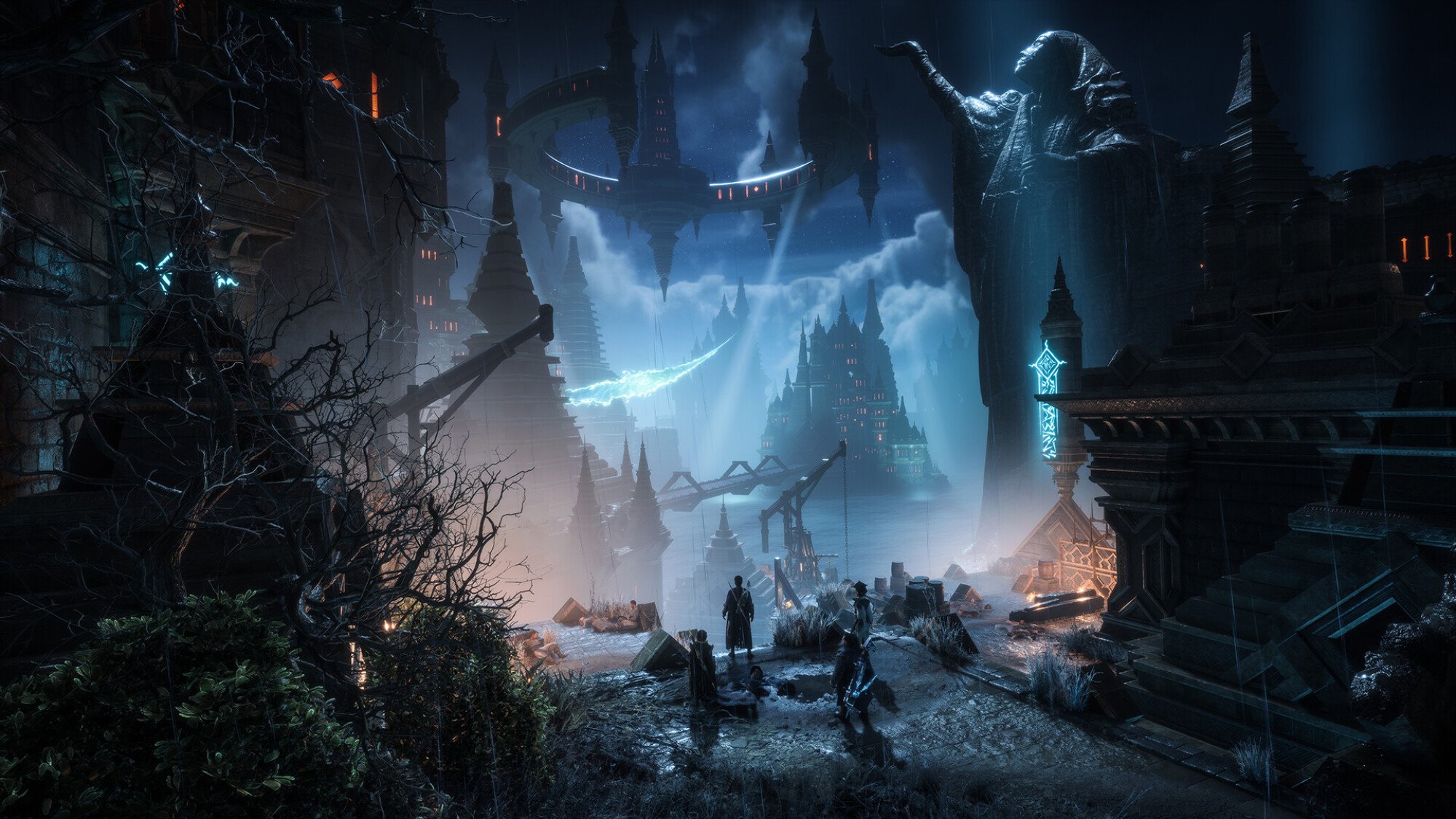
Credit: BioWare/Steam
In the minds of many, Dragon Age: Inquisition was the last good BioWare game. I am not one of those people because it was nakedly trying to chase Skyrim with nearly 100 hours of bloated, boring side content that got in the way of solid character work. The combat was also terrible, which has generally been the case in Dragon Age games.
Good news! Veilguard goes out of its way to make sure neither of those problems are present here. This isn’t a short game (I expect my finished save to come in at around 45-50 hours), but it’s one that feels intentional and focused in its design, which makes the pacing breezy and engaging after the opening chapter or two.
Inquisition’s open-world ambitions have been replaced by a series of comparatively small but incredibly dense “exploration areas,” which can feature everything from random enemy encounters to optional quests, hidden areas full of treasure, and puzzles to solve. Most fascinating is the inclusion of Metroid-style progress checks in the form of character abilities. Each party member has a specific environmental puzzle-solving power that only unlocks after they join the party, so you’re encouraged to go back to old areas and explore them further after the first sojourn into them.
While the level design doesn’t come close to Dark Souls qualitatively, the philosophy is there. These exploration areas fold in and around each other with lots of optional shortcuts to open and secrets to find. Going off the beaten path is almost always rewarding in some way, as you’re usually given high quality gear with genuinely useful bonus effects for doing so.
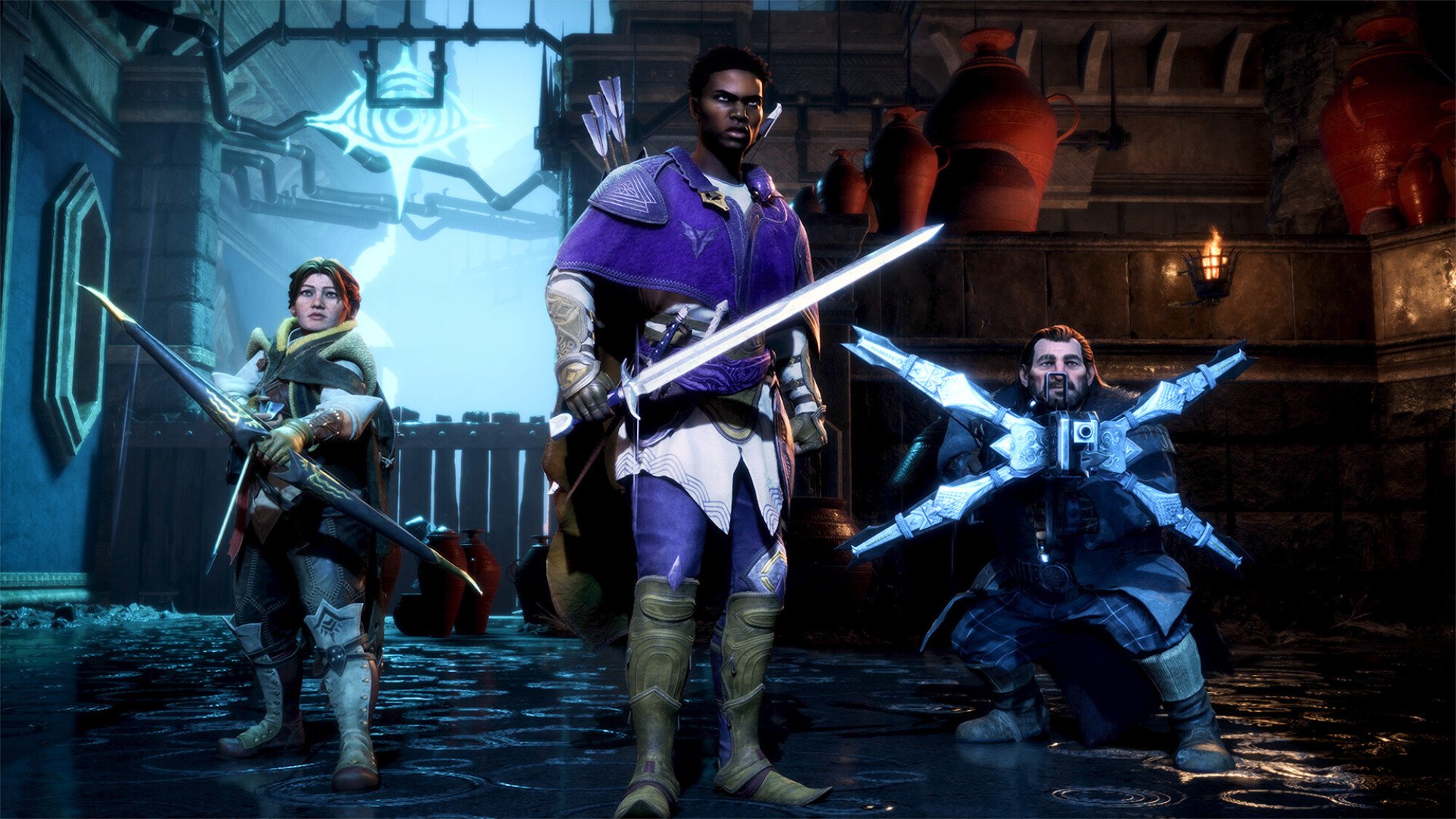
Credit: BioWare/Steam
None of this is revolutionary, of course, but it crucially gives you things to do between fights that are actually kind of fun most of the time. It doesn’t hurt that Inquisition’s bloated gear crafting system is gone, in favor of a new system in which the total amount of gear in the game is pretty small, but you gradually unlock interesting upgrades for each piece over time.
And while the last Dragon Age overflowed with side quests that typically felt like time-wasting drudgery, Veilguard’s optional missions almost always feature some kind of bespoke elements (like unique areas or even enemies in some cases) that make them feel more robust. Most impressive is that disparate side quests in one area can actually converge into one level-specific storyline, so pursuing everything so far has been fulfilling.
Companion-specific quests also return and have been fleshed out from previous BioWare efforts. Each party member has their own personal storyline that gradually develops over the course of the entire game. Sometimes they’ll ask you to walk-and-talk with them in the woods and other times they’ll ask you to do a totally unique and optional dungeon with them, but every companion activity progresses whatever that character’s arc happens to be.
It’s a compelling reason to keep returning to the hub and talking to people as often as possible. While most of the side quests follow a familiar “run to the objective marker and do whatever it says” rhythm, they at least feel like they exist for a reason other than padding out an hour count. That’s really all I ask. Plus, it’s just nice to take a walk and chat with a friend.
Who doesn’t love fighting?
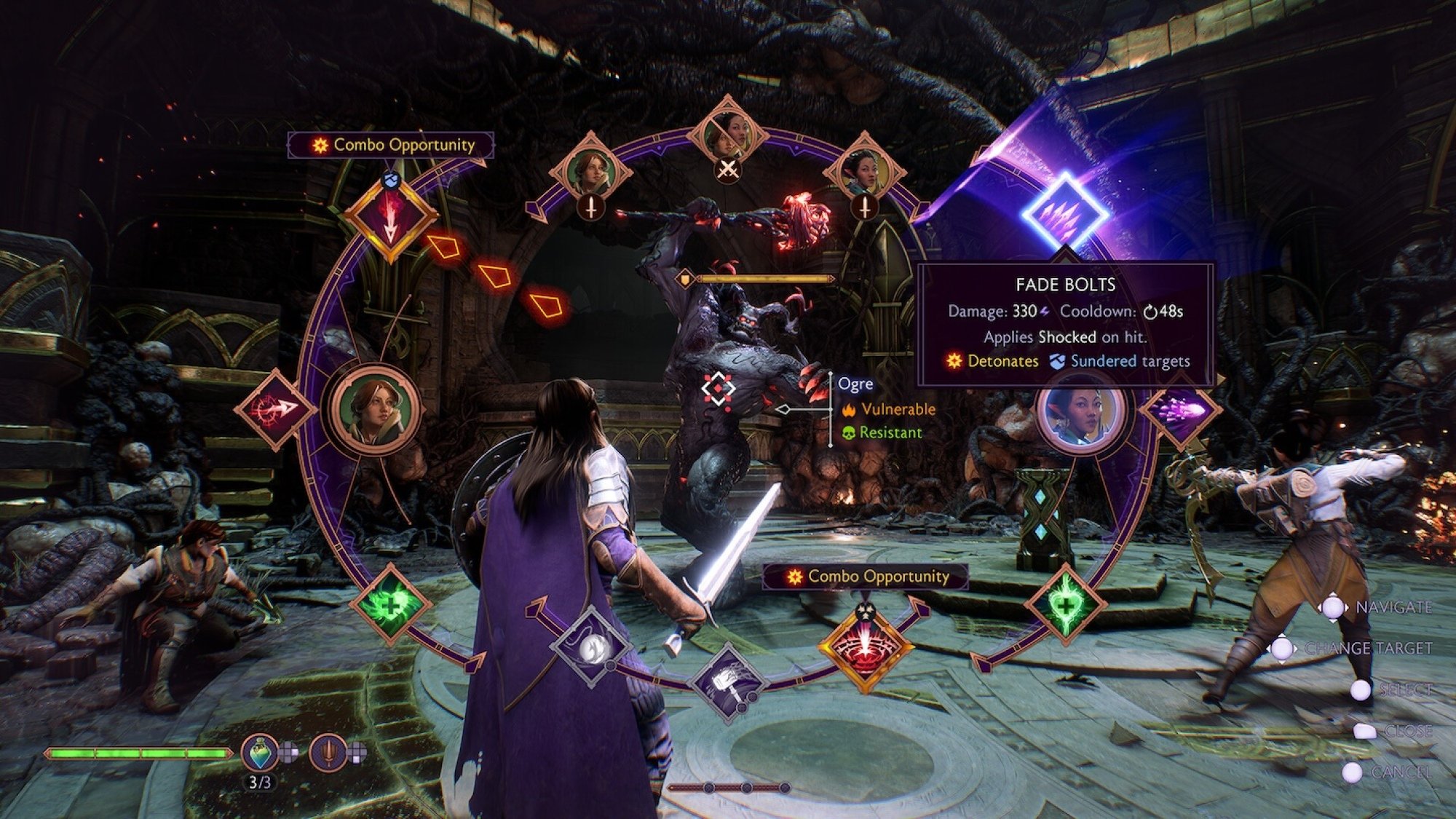
Credit: BioWare/Steam
Dragon Age is a lot of things to a lot of people. For most of my friends, it’s a dating sim that has an RPG in it. That stuff is cool, for sure, but if you happen to like crunchy, satisfying action RPG combat, Veilguard has that for days.
It doesn’t have an overwhelming amount of tactical depth a la Baldur’s Gate 3, but it’s a frenetic, skillful power fantasy at its best. Fights often require situational awareness of large arenas full of enemies casting ranged magic at you while some variety of giant brute tries to kick your ass up close. Darting around the place while awesome-looking spell effects pop off every few seconds makes for really fun encounters most of the time.
A straightforwardly good class and upgrade system helps seal the deal. You’ll choose from one of three main classes (warrior, rogue, and mage) at character creation, but each class has a large skill tree that can take you towards one of three specializations. I went with a mage and worked towards the “spellblade” specialization, which involves teleporting around the battlefield while casting lightning magic at baddies and using a dagger to create magic explosions around them. It’s incredibly fun.
Mass Effect: Andromeda may be the most embarrassing game in BioWare’s catalog, but it did introduce the primer/detonator system that helps make Veilguard’s combat sing. The way this works is that combat abilities with negative status effects attached to them can act as “primers,” while other abilities can “detonate” them to create a big kaboom that can do all sorts of things to enemies depending on how you spec out your party.
Putting together a successful three-person party is all about synergizing characters who can prime with other characters who can detonate, as no character can do both on their own. The only bummer here for me is that commanding your homies to prime and detonate is about as far as the tactical depth goes on the default difficulty. You can also command allies to attack specific targets, but otherwise you’re left to focus on your own survival during fights.
Veilguard doesn’t have Andromeda problems
Real quick, I’d like to shout out Veilguard‘s general sense of polish that didn’t really exist in the last couple of BioWare games.
By that, I mean that I’ve encountered only minor visual bugs in my 30 hours of gameplay, and absolutely nothing in the realm of glitches that impede gameplay or progress. The worst thing that happened to me was that my character’s hair disappeared after a cutscene, but it came back when I rebooted the game. Compared to Andromeda, which was infamously busted at launch, Veilguard is a massive step up.
Similarly, performance is not a problem, at least on PlayStation 5. It’s got quality and performance modes like any other game, and they work as you’d expect. Quality mode targets and, as far as I could tell, hits 30 frames per second, while performance mode actually does an excellent job of consistently running at 60FPS. On top of that, it’s just a handsome-looking game all around, with expressive lighting and cool environment design to go along with high quality character models.
Is Dragon Age: The Veilguard worth getting?
I am here to tell you that Dragon Age: The Veilguard is a solidly good RPG. Its character work is admirable, as are its exploration philosophy and combat acumen. Taken strictly on its merits, this is a fine game that I think will make Dragon Age fans happy.
The problem is that it’s hard to take this game strictly on its merits during a particularly active and vibrant time in the RPG genre. I don’t think Veilguard is as good as Final Fantasy VII Rebirth or Metaphor: ReFantazio, not to mention Baldur’s Gate 3, which by most accounts is a generational role-playing experience.
But what I would say specifically to people who want to compare and contrast Veilguard to Baldur’s Gate 3 is: don’t. One of them was developed with seemingly consistent leadership and a coherent creative vision to go along with fan feedback via an extended early access period, while the other was made under the Electronic Arts umbrella and faced numerous public development challenges over the course of several years.
That Veilguard exists at all is something of a miracle, and that it’s the first good BioWare game in more than a decade feels nearly impossible. It may not be a new standard-bearer for the genre, but merely being pretty good feels like something of a triumph.
For more Mashable game reviews, check out our OpenCritic page.




















0 Comments